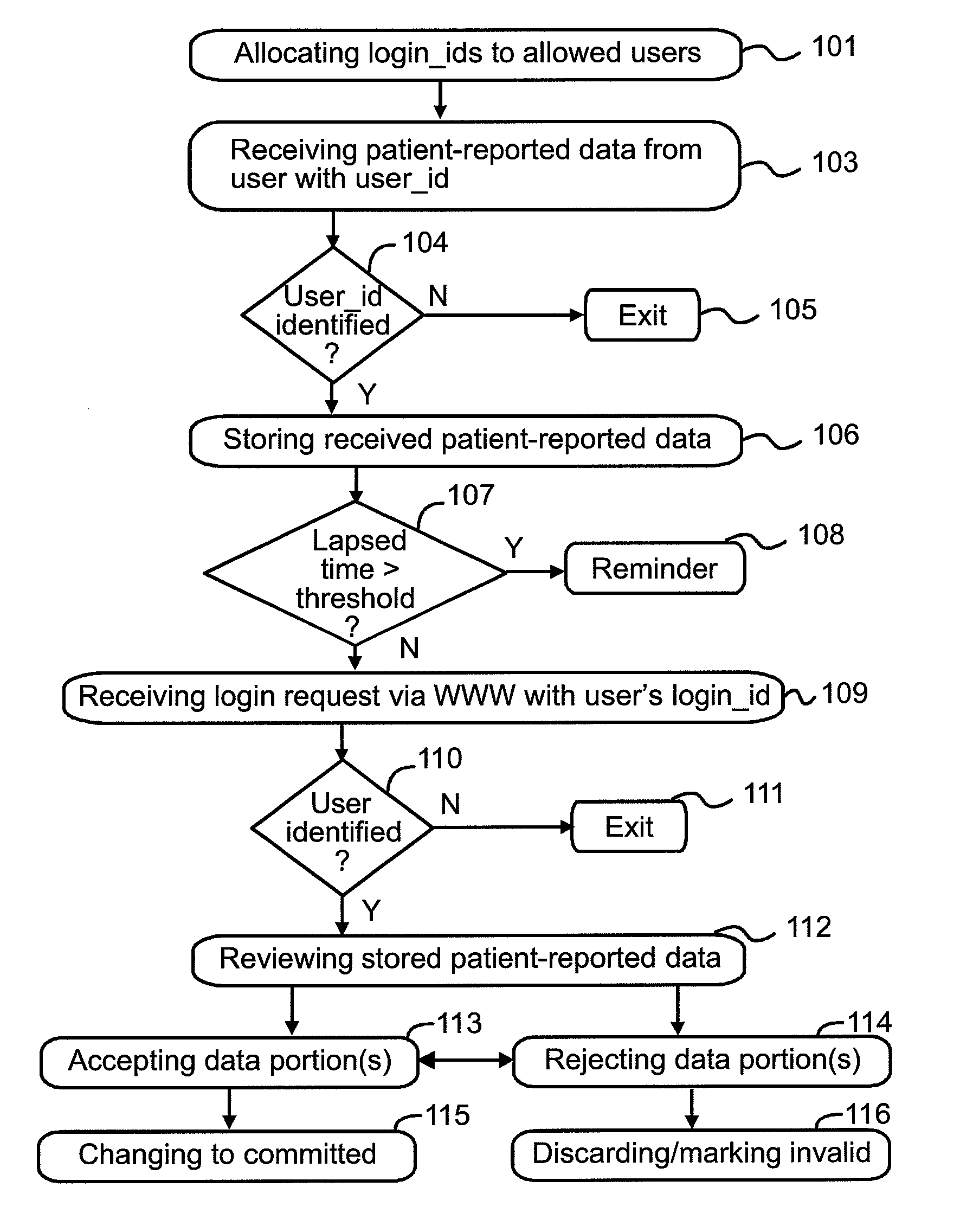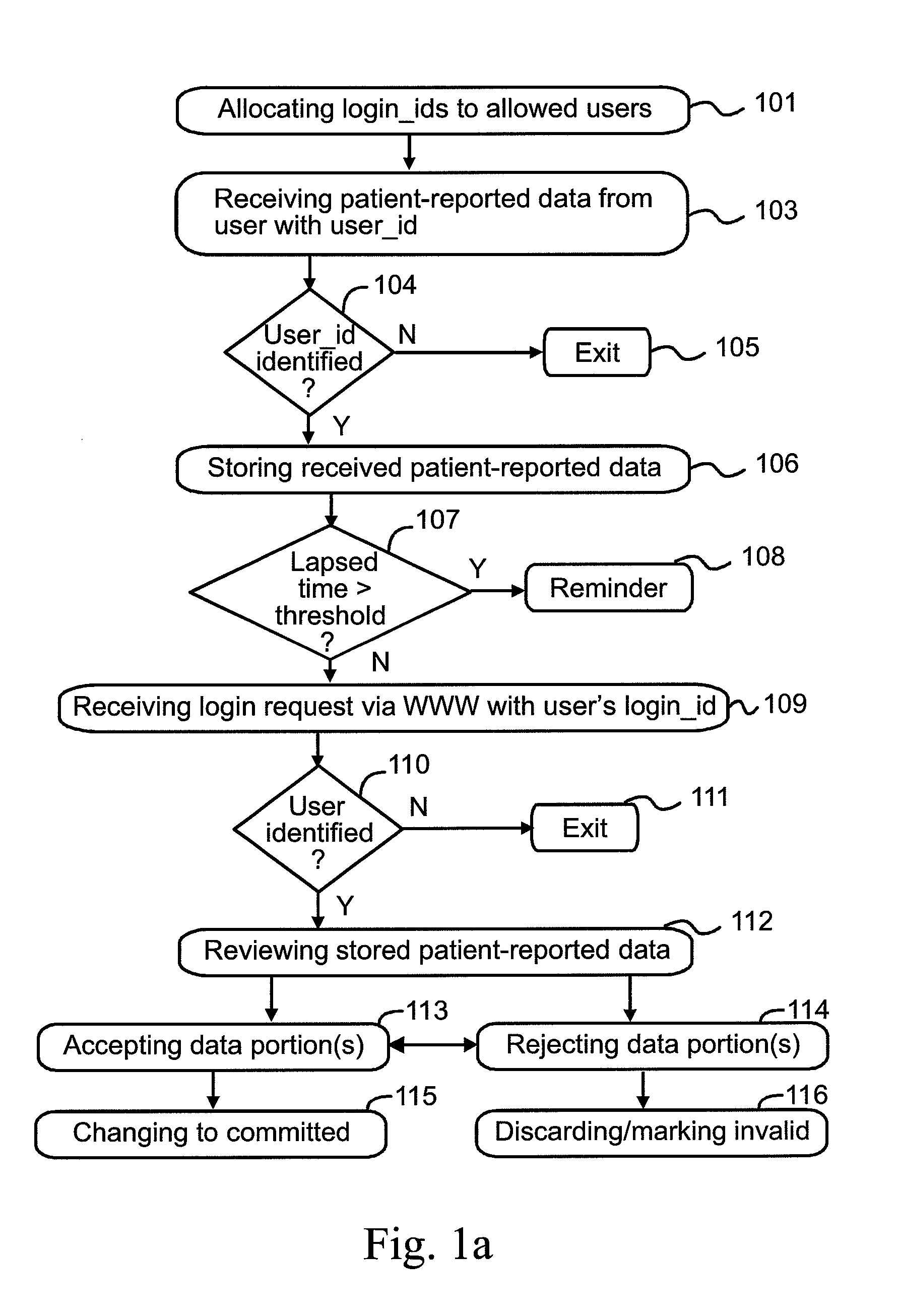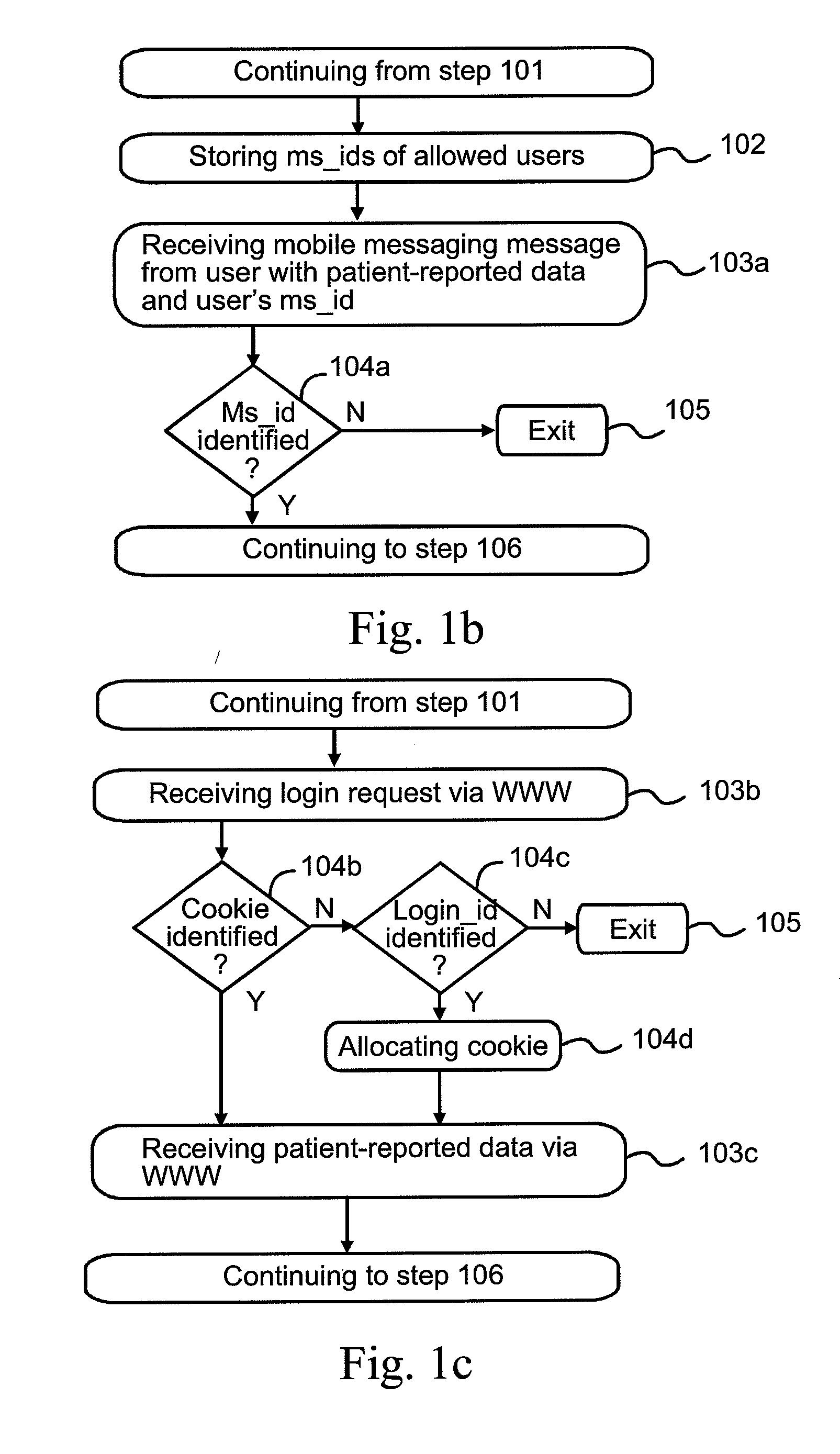Authentication of a mobile user of an electronic patient diary
a mobile user and user authentication technology, applied in the field of authentication of electronic patient diary users, can solve the problems of paper-based patient diary use, slow, unintuitive and inconvenient use, invalid and inaccurate data collection, etc., to achieve convenient and secure use, reduce costs for patients, and facilitate use.
- Summary
- Abstract
- Description
- Claims
- Application Information
AI Technical Summary
Benefits of technology
Problems solved by technology
Method used
Image
Examples
Embodiment Construction
Reference will now be made in detail to the embodiments of the invention, examples of which are illustrated in the accompanying drawings.
FIG. 1a is a flow diagram illustrating a method of authenticating a mobile user of an electronic patient diary according to an embodiment of the invention. FIG. 1b is a flow diagram illustrating steps 103-104 of FIG. 1a in more detail according to an embodiment of the invention, and FIG. 1c is a flow diagram illustrating steps 103-104 of FIG. 1a in more detail according to another embodiment of the invention.
At an optional step 101, login identification information may be allocated to users allowed to use an electronic patient diary. The identification information may comprise e.g. a username and an associated password. Herein, the term “user” refers to a person (such as e.g. a patient, a guardian of the patient, a care giver of the patient, or an observer of the patient) using an electronic patient diary to record and submit patient-reported data ...
PUM
 Login to View More
Login to View More Abstract
Description
Claims
Application Information
 Login to View More
Login to View More - R&D
- Intellectual Property
- Life Sciences
- Materials
- Tech Scout
- Unparalleled Data Quality
- Higher Quality Content
- 60% Fewer Hallucinations
Browse by: Latest US Patents, China's latest patents, Technical Efficacy Thesaurus, Application Domain, Technology Topic, Popular Technical Reports.
© 2025 PatSnap. All rights reserved.Legal|Privacy policy|Modern Slavery Act Transparency Statement|Sitemap|About US| Contact US: help@patsnap.com



